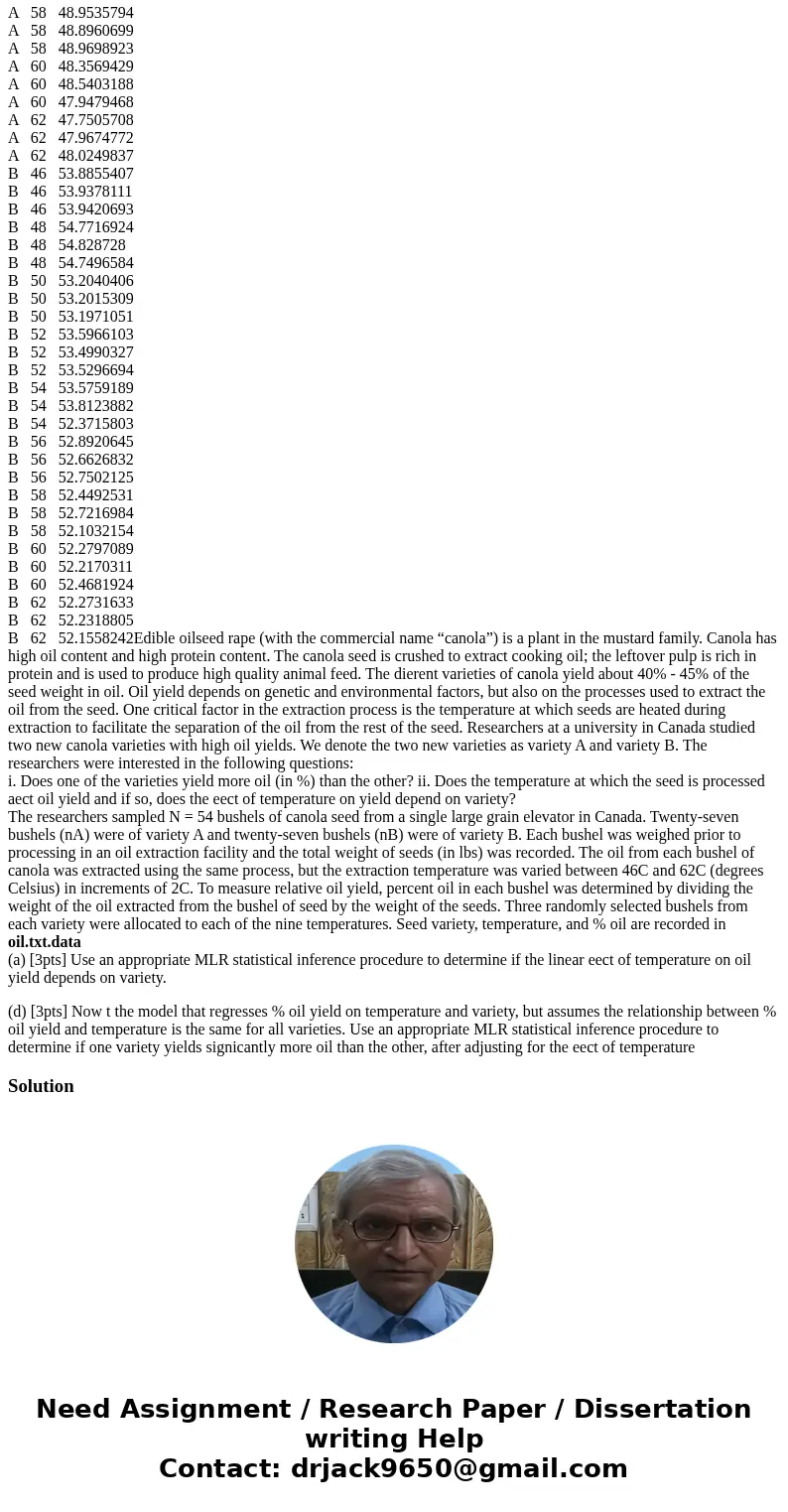variety temp oil A 46 519069637 A 46 519659821 A 46 52255631
variety temp oil
A 46 51.9069637
A 46 51.9659821
A 46 52.2556315
A 48 50.2452585
A 48 49.8179989
A 48 50.2324574
A 50 50.3397975
A 50 50.3381046
A 50 50.443097
A 52 51.3327973
A 52 50.8379913
A 52 50.9543084
A 54 50.2916205
A 54 49.8599803
A 54 50.3793026
A 56 48.6773358
A 56 49.0073587
A 56 49.1153413
A 58 48.9535794
A 58 48.8960699
A 58 48.9698923
A 60 48.3569429
A 60 48.5403188
A 60 47.9479468
A 62 47.7505708
A 62 47.9674772
A 62 48.0249837
B 46 53.8855407
B 46 53.9378111
B 46 53.9420693
B 48 54.7716924
B 48 54.828728
B 48 54.7496584
B 50 53.2040406
B 50 53.2015309
B 50 53.1971051
B 52 53.5966103
B 52 53.4990327
B 52 53.5296694
B 54 53.5759189
B 54 53.8123882
B 54 52.3715803
B 56 52.8920645
B 56 52.6626832
B 56 52.7502125
B 58 52.4492531
B 58 52.7216984
B 58 52.1032154
B 60 52.2797089
B 60 52.2170311
B 60 52.4681924
B 62 52.2731633
B 62 52.2318805
B 62 52.1558242Edible oilseed rape (with the commercial name “canola”) is a plant in the mustard family. Canola has high oil content and high protein content. The canola seed is crushed to extract cooking oil; the leftover pulp is rich in protein and is used to produce high quality animal feed. The dierent varieties of canola yield about 40% - 45% of the seed weight in oil. Oil yield depends on genetic and environmental factors, but also on the processes used to extract the oil from the seed. One critical factor in the extraction process is the temperature at which seeds are heated during extraction to facilitate the separation of the oil from the rest of the seed. Researchers at a university in Canada studied two new canola varieties with high oil yields. We denote the two new varieties as variety A and variety B. The researchers were interested in the following questions:
i. Does one of the varieties yield more oil (in %) than the other? ii. Does the temperature at which the seed is processed aect oil yield and if so, does the eect of temperature on yield depend on variety?
The researchers sampled N = 54 bushels of canola seed from a single large grain elevator in Canada. Twenty-seven bushels (nA) were of variety A and twenty-seven bushels (nB) were of variety B. Each bushel was weighed prior to processing in an oil extraction facility and the total weight of seeds (in lbs) was recorded. The oil from each bushel of canola was extracted using the same process, but the extraction temperature was varied between 46C and 62C (degrees Celsius) in increments of 2C. To measure relative oil yield, percent oil in each bushel was determined by dividing the weight of the oil extracted from the bushel of seed by the weight of the seeds. Three randomly selected bushels from each variety were allocated to each of the nine temperatures. Seed variety, temperature, and % oil are recorded in oil.txt.data
(a) [3pts] Use an appropriate MLR statistical inference procedure to determine if the linear eect of temperature on oil yield depends on variety.
(d) [3pts] Now t the model that regresses % oil yield on temperature and variety, but assumes the relationship between % oil yield and temperature is the same for all varieties. Use an appropriate MLR statistical inference procedure to determine if one variety yields signicantly more oil than the other, after adjusting for the eect of temperature
Solution


 Homework Sourse
Homework Sourse